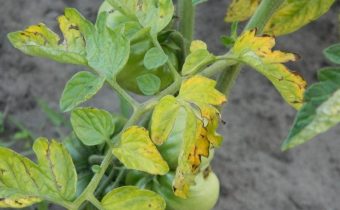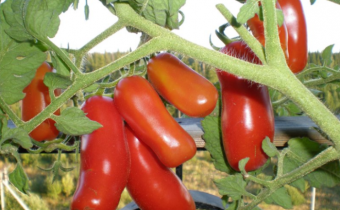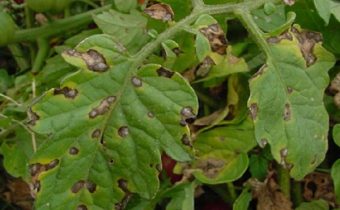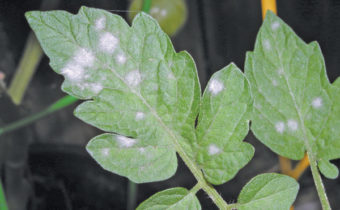Why do tomato leaves turn yellow in the greenhouse and how to deal with it?
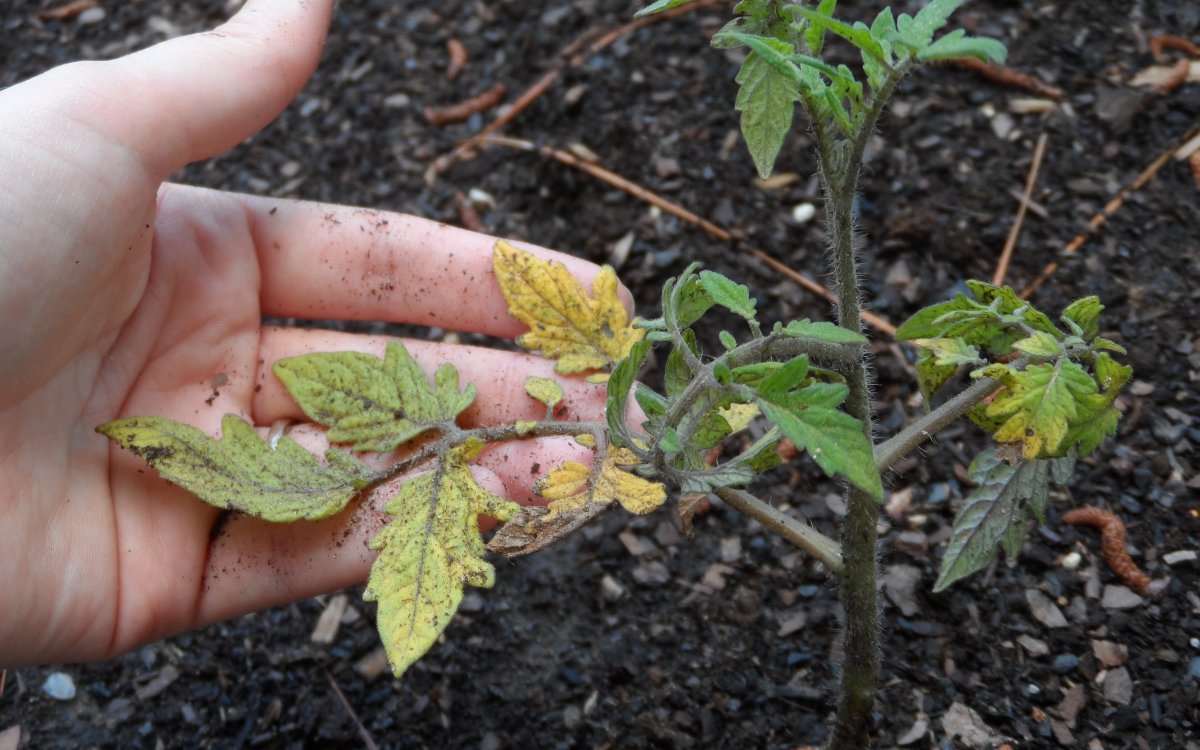
Speaking about the unpleasant moments in the summer resident's life, we mean the weather conditions that do not always please, the infertility of the soil, attacks by insects, of course, diseases that can deprive the crop completely. And today we will talk about a very common problem - tomato leaves turn yellow and dry in greenhouse conditions. Why is this happening, what to do, let's understand.
Should I worry?
Many newcomers to the dacha business believe that the plants in the greenhouse are in an ideal climate. They are confident that the harvest simply cannot be a record one, the fruits cannot be small, because there are no pests here, the greenhouse is basically closed, there are no diseases that can be transmitted from the neighbor's plot. Of course, the weather conditions in greenhouses are much better than if tomatoes were grown on the street. But so often it happens that one day the problems begin, and many wonder why. And these troubles are very, very different, but we parse the question of why the leaves of tomato seedlings turn yellow.
See also: Verlioka tomato characteristic and description of the variety photo
At the same time, timeliness of measures is very important. Therefore, if you see that your seedlings begin to change the color of a part of the leaves from day to day, fold them, twist, then you should not hope that everything will pass by itself, because the reasons can be serious. Among which are dangerous diseases of tomatoes, which will lead to the infection of all tomatoes in the greenhouse, moreover you will endanger the crops and crops that suffer from similar diseases.
Why can leaves turn yellow in a greenhouse?
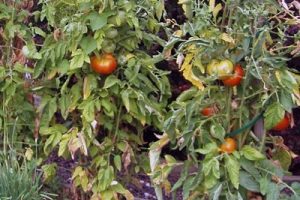 Improper care
Improper care
There are many reasons and this is one of the most common. So, the greenhouse is a good place for growing, but it can be ideal only with proper care. You must comply with the watering mode. If the seedlings do not have enough moisture, then they will naturally throw off part of the leaves in order to preserve it and not die. But if you flood the seedlings, the effect may be the same. That is, the leaves will fall, the bushes become smaller and thinner. Everything is good in moderation.
Solution methods:
- everything is simple - watering only as the soil dries out, no swamp and plenty of wet land day after day;
- obligatory loosening for access of oxygen to the root system, destruction of the pathogenic environment and liquidation of stagnant moisture;
- airing the greenhouse every time after watering.
Root injury
Tomatoes tolerate transplantation and picking very well, they adapt quickly, but only if their roots have not been damaged or are oppressed by a small capacity. A weak root system simply cannot get maximum benefit from the soil, moisture and feed the aboveground part. The plant begins to throw off the green mass in order to restore its base - the roots. Therefore, the tomato leaves turn yellow, and then they begin to fall off.
Solution methods:
- Do not panic, but wait for the plants to gain strength, increase the accessory shoots, and the green mass will recover. There is time for this, because in the greenhouse the growing time is much longer;
- You can independently remove some of the sick, yellow, twisted leaves to help the bushes recover faster.
Important!
If you decide to cut part of the leaves, then use sterile scissors, the procedure is carried out in the morning or in the evening in cool weather.
Lack of nutrients
Poor soils cannot give food to crops, and tomatoes respond very well to feed. If the roots have nothing to feed the green mass, which in tomatoes is always quite abundant and powerful, then it is logical that the above-ground part begins to suffer. Very often, talking about the feed during the cultivation of tomatoes, they talk about mineral fertilizers, but the emphasis is on the fact that there is not a lot of nitrogen in the composition. Why? Yes, because bushes, greens will grow, but fruits will not form.
It is clear that if the soil is poor and the leaves fall, then nitrogen, on the contrary, they need, therefore, the feed must be selected with its high content. We continue to answer the question, the leaves turn yellow at the tomato, what to do with the ailment.
See also: Tomato "Krasnobay" characteristic and description of the variety
Solution methods:
- feed manure 3-4 times per season. The proportions of dilution with water 1:10. Fertilizer compensates for nitrogen;
- feeding chicken droppings 2-3 times per season, 1:20. Also sprinkle the ground around the stem with ashes;
- the introduction of mineral complex preparations, which compensate for the shortage of different substances, as the lower leaves turn yellow in tomatoes and from a lack of copper, causing chlorosis, sulfur — the green changes color and becomes coarse, manganese — leaves are pale yellow;
- use sprays with a 1% solution of mineral dressings regularly until the bushes begin to actively grow and develop.
Parasites
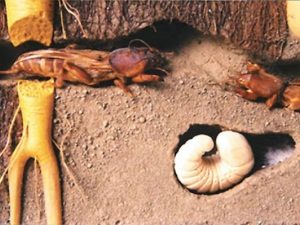 This is one of the very common reasons. Pests can appear on a variety of reasons, including from excessive moisture. Wet land, warm climate inside is a paradise for parasites, they multiply exponentially in such conditions, causing damage to landings. Parasites can bother both the aboveground parts and eat the root system, and we remember what was said earlier - sick, injured, underdeveloped roots are reasons to fold and change the color of the leaves.
This is one of the very common reasons. Pests can appear on a variety of reasons, including from excessive moisture. Wet land, warm climate inside is a paradise for parasites, they multiply exponentially in such conditions, causing damage to landings. Parasites can bother both the aboveground parts and eat the root system, and we remember what was said earlier - sick, injured, underdeveloped roots are reasons to fold and change the color of the leaves.
But let's say everything is fine with your watering, then why do the lower leaves turn yellow in tomatoes and where do the parasites come from? Yes, from anywhere - you did not cultivate the soil before planting the seedlings, changed the soil, brought in the humus, delivered the earth, and it was contaminated. Processing is very important, both at the stage of sowing, and during the transfer, and in the further care of plants.
For information!
Even purchased storey soil, where there is a balance of all nutrients, can be infected with parasites.
Solution methods:
- to observe the mode of watering, to air the greenhouse, to loosen the soil;
- deep digging between rows, to destroy the paths and dwellings of insects;
- if the bear started, then the fight is hard, but possible. One of the options is to dig up the bushes, if the seedlings are still small, shed holes with boiling water with manganese and dig inside the restriction. The parasite cannot then have a root;
- use bait, for example, bury a sweet syrup or a bottle of beer, most often the parasites crawl out and find themselves all in one place;
- add ash to the soil; you can also sprinkle the ground with pepper, cinnamon, spill it with an extract of worm-like smell of a weed, many insects do not like these smells and leave;
- You can use drugs - such as "Thunder", "Medvetoks", "Basudin." The latter drives the wireworm, you can also get rid of it by spreading the carrots or potatoes, then the parasites will eat the bait.
Poorly processed greenhouse
This is a very important point - the greenhouse should be carefully prepared in the fall and spring, you should change the soil to a new one, spill it with boiling water with manganese before planting.Also use smoke bombs, wipe the entire area of the greenhouse with antiseptics. Otherwise you risk getting crop diseases and pathogenic growth.
Solution methods:
- if possible, treat the soil with means that do not harm the plants;
- to decontaminate the premises from the walls to the ceiling.
- to deal with parasites and diseases about what further.
Tomatoes are sick
And last but not least, in answering the question why the leaves of tomato seedlings turn yellow. This, of course, because the seedlings struck the disease. They could be brought in from outside by humans, pets, insects, they could have been earlier in the greenhouse, which we discussed in previous paragraphs. It is the yellowing of leaves in tomatoes that most often cause two major diseases.
See also: Tomato "Chio-chio-san" reviews photos, who planted?
- Fusarium The disease leads not only to a change in the color of the leaves on the seedlings, but to their wilting. Most often occurs due to the long-contaminated soil in which the fungus has lived for a long time. At the same time he can get with animals, and with seeds, and on shoes, and with the help of tools that you work in the garden. If the greenhouse is also warm, very damp, then the fungus will multiply very, very quickly. First, the disease affects the root system, and then spreads rapidly, causing external symptoms;
- Late blight. This is one of the most common diseases that all gardeners know about and not only. It also causes a fungus, appears for similar reasons, spreads quickly and can completely destroy the entire crop.
Solution methods:
- in the first case, drugs are used - "Previcur", "Trichodermin";
- in the second - Bordeaux mixture, "Infinito", "Tattu", as well as disinfection of space, soil. If the plants are still sick, they are urgently removed, the place is treated, and the seedling is burned somewhere far from the site.
If you managed to cure, then prevention will also be needed, remember this. Now you know why tomato leaves turn green in a greenhouse and how to deal with it. Much depends on your quick action, do not forget.
Your dacha should bring a good harvest of useful fruits, but for this you need to perform a number of agricultural techniques, among which the processing is very important.


